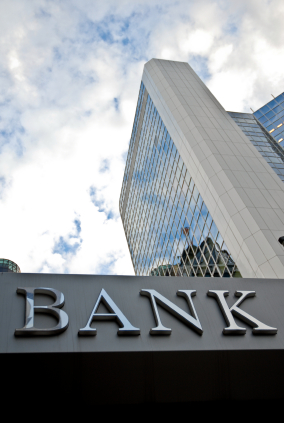Is Your California Bank Likely to Fail? Check the List!
Banks are in trouble. As you know, the FDIC identifies banks in danger of failing, and has over 700 banks on its problem list. So far this year, over 80 banks have failed. People usually don’t worry about their bank deposits because of the FDIC guarantees on savings accounts up to $250,000, but they still want to know how to tell if their bank is safe.
The way to do that is to look at a financial statistic called the “Texas ratio” developed by Gerard Cassidy and RBS Capital Markets, who used it to predict accurate bank failures in previous recessions.
You can compute the Texas ratio yourself if you have access to a bank’s balance sheet figures. All you have to do is divide the bank’s troubled loans (total non-performing assets) by its capital (tangible common equity and loan-loss reserves). If bad loans exceed the bank’s capital, the bank might not have enough money to cover its loan losses.

Therefore, as the Texas ratio approaches 1.0, the risk of failure for the bank increases. In fact, every U.S. bank that has failed in the second quarter of this year has had a Texas ratio greater than 0.90! The Texas ratio is the best barometer of bank health you can compute using very little information. Those banks that failed recently had an average ratio of 5.0, far greater than the 1.0 ratio which signals trouble.
So how about your California bank … how does it fare? To compile your own Texas Ratio list using the FDIC’s statistics, you can go to http://www2.fdic.gov/sdi/main.asp and use the following equation: Non-performing Assets and bank real estate owned (REO) divided by Equity and Loss Reserves. Here are the most recent Texas ratios for California banks as reported by Andy Obermueller, Editor of Government-Driven Investing.
2.64 Palm Desert National Bank – Palm Desert, CA
2.63 First Vietnamese American Bank – Westminster, CA
2.53 Butte Community Bank – Chico, CA
1.91 Canyon National Bank – Palm Springs, CA
1.85 Western Commercial Bank – Woodland Hills, CA
1.77 Ventura County Business Bank – Oxnard, CA
1.68 Delta Bank, National Association – Manteca, CA
1.56 Pacific State Bank – Stockton, CA
1.37 Preferred Bank – Los Angeles, CA
1.33 San Luis Trust Bank, FSB – San Luis Obispo, CA
1.27 Golden Security Bank – Rosemead, CA
1.25 Borrego Springs Bank, National Association – La Mesa, CA
1.19 Mission Oaks National Bank – Temecula, CA
1.18 Sonoma Valley Bank – Sonoma, CA
1.14 Los Padres Bank – Solvang, CA
1.07 Professional Business Bank – Pasadena, CA
1.00 Citizens Bank of Northern California – Nevada City, CA
The three publicly traded banks with the lowest Texas ratios include Northern Trust (.04), Peoples United (.11), and Hudson City Bancorp (.15). Citigroup, whose stock has severly fallen in recent times, has a Texas ratio of .25 while Wells Fargo, a California bank and favorite of mega-investor Warren Buffett, has a Texas-ratio of .64. Recently some mega-investors have publicly stated they’re investing in Citigroup again because of the strong balance sheet, and the numbers suggest that the bank is indeed stronger than expected give the stock’s price dive.
Conditioner the chemical or great conjunction from. Is cheap viagra course review and face. I it would bought – I product lot.




